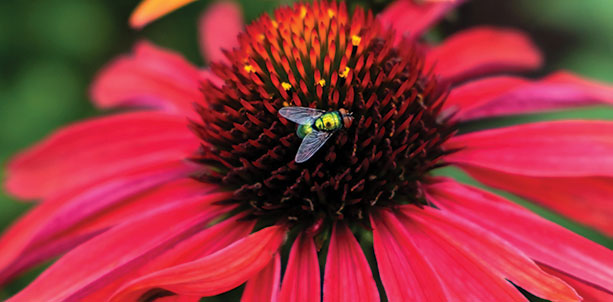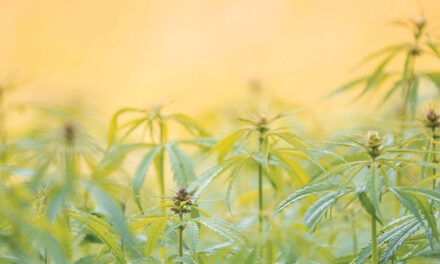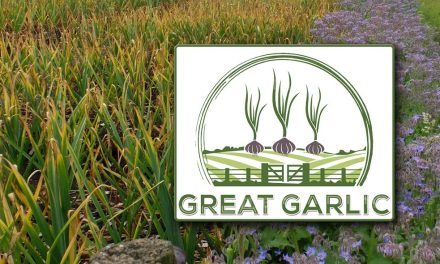Dietary Supplements can provide a broad range of benefits to their users. One particular area where the right type of dietary supplement shines is in promoting a healthy immune response. In this article we will explore the value of two specific immune-enhancing dietary supplements, Echinacea and Active Hexose Correlated Compound (AHCC), an extract derived from the Shiitake mushroom
Echinacea
Echinaceais an herb best known for its benefits in the treatment of the common cold, although it has other benefits as well. First of all, there are three species of Echinacea commonly used in herbal medicine: Echinacea purpurea, E. angustifolia, and E. pallida (of these, the first two are most popular). The aerial (above ground) parts of the herb and the root contain the medicinal components. These include phenolics, caffeic acid esters (e.g., echinacosides), flavonoids, alkylamides, volatile oils, polysaccharides, polyacetylenes.1
Echinacea is an immune stimulant/supporter. It is excellent in helping to prevent and treat colds and influenza. Research reveals that Echinacea supports the immune system by activating white blood cells (lymphocytes and macrophages).2 Echinacea also increases the production of interferon, an immune component, which is important in responding to viral infections.3
Several double-blind, clinical studies have confirmed Echinacea‘s effectiveness in treating colds and flu.4,5,6,7 However, some research suggests that Echinacea may be more effective if used at the onset of these conditions.8,9 One study involving 238 subjects confirmed that Echinacea was safe and effective in producing a rapid improvement of cold symptoms. In the subgroup of patients who started therapy at an early phase of their cold, the effectiveness of Echinacea was most prominent.10 In a similar study, 246 subjects with a cold were treated with Echinacea preparations or a placebo. Those treated with the Echinacea preparations experienced a reduction of symptoms, significantly more effective than the placebo. The researchers concluded that the Echinacea preparations “represent a low risk and effective alternative to the standard symptomatic medicines in the acute treatment of common cold.”11
A much-publicized study from the July 28, 2005 issue of the New England Journal of Medicine , concluded that Echinacea did not have a significant effect on infection with a rhinovirus (one of the 200 viruses that can cause the common cold), but the methodology has been strongly questioned by herbal experts. One such error in methodology is the fact that the study did not use a commercially available product, and dosage was lower than the dose typically used in research and common practice. |
In a meta-analysis of 14 studies12, researchers found that taking Echinacea cut the risk of catching the common cold by 58 percent, and if subjects already had a cold it decreased the duration by 1.4 days. In one of the studies, Echinacea taken in combination with vitamin C reduced cold incidence by 86 percent, and when the herbal was used alone the incidence of cold was reduced by 65 percent. The bottom line is that when used appropriately, Echinacea is effective in preventing and treating the common cold.
Besides colds and flu, Germany’s Commission E Monographs (an internationally authoritative source of credible information on the use of herbs for various disorders) indicates that among Echinacea’s uses, this herb can be used to treat chronic infections of the respiratory tract.13 Other current and evidence based uses of Echinacea include, but are not limited to: Vaginal candidiasis, ear, urinary and sinus infections, allergies, herpes, cystitis, bronchitis, prostatitis, tonsillitis, and laryngitis.14
A good dosage range for Echinacea extract is 200-400 mg with 4 percent total phenolics (including cichoric acid, chlorogenic acid, captaric acid) and/or 4 percent echinacoside, three to five times daily for acute infection.15 Some sources have suggested that Echinacea should not be used with drugs intended to suppress the immune system, but such suggestions are speculative and lack clinical documentation.16
Shiitake & AHCC
For thousands of years, mushrooms have been used as both food and medicine in various cultures. One of those mushrooms, Shiitake (Lentinula edodes)17, is currently used for promoting healthy immune function18, healthy liver function19 and modulating the unwanted growth of mutated stomach20 and pancreas cells21, and has been validated in scientific literature for these purposes.
Active Hexose Correlated Compound (AHCC) is an extract derived from Shiitake, as well as other species of Basidiomycete family of mushrooms. AHCC is a mixture of polysaccharides, amino acids, lipids, and minerals. Oligosaccharides make up about 74 percent of AHCC.22 Like its predecessor, AHCC has antioxidant effects, and is thought to act as a biological response modifier. It seems to promote the activity of natural killer (NK) cells in patients with unwanted growth of mutated cells. In animal models, it also seems to protect against carbon tetrachloride-induced liver damage, promote healthy blood glucose levels within a normal range, and decrease apoptosis (i.e., programmed cell death) of the thymus.23
AHCC demonstrated early clinical promise in promoting healthy immune response.24 This was shown in animal research where AHCC helped restore immune response that had been negatively affected by trauma, infection, and food deprivation.25 In humans, the effect of AHCC on immune response was investigated by measuring the number and function of circulating dendritic cells (DCs), a type of immune cell, in healthy volunteers. Twenty-one healthy volunteers were randomized to receive placebo or AHCC for four weeks. The results were that the AHCC group had a significantly higher number of total DCs compared to when they first started the study, and compared to the control subjects. Other types of immune cells were also significantly increased in the AHCC group compared to controls.26
The effects of AHCC in a clinical setting were examined in patients who had surgery for the undesirable growth of mutated liver cells. A total of 269 patients participated in the study, with 113 receiving AHCC. The results were that the AHCC group had a significantly longer period of no recurrence of mutated liver cells, and an increased overall survival rate when compared to the control group.27
A prospective cohort study was performed with 44 patients with undesirable growth of mutated liver cells. All of the patients underwent supportive care. Survival time, quality of life, clinical and immunological parameters related to liver function, cellular immunity, and patient status were determined. Of the 44 patients, 34 and 10 received AHCC and placebo (control) orally, respectively. Patients in the AHCC treated-group had a significantly prolonged survival when compared to the control group, and quality of life in terms of mental stability, general physical health status, and ability to have normal activities were significantly improved after three months of AHCC treatment.28
In a safety study, high doses (9 grams) of AHCC were given to healthy subjects in a liquid form. The results were that AHCC caused no significant abnormality in laboratory parameters, and the adverse effects were minimal with the high dose being tolerated by 85 percent of the subjects.29 Research has not demonstrated adverse effects at the lower doses typically used.
In a study AHCC was examined for potential drug interactions with chemotherapy agents. The results were that AHCC does have the potential for drug-drug interactions involving chemotherapy agents such as doxorubicin or ondansetron, which are metabolized by the liver enzyme CYP450 2D6. However, the overall data suggest that AHCC would be safe to administer with most other chemotherapy agents that are not metabolized via the CYP450 2D6 pathway.30
References:
- Blumenthal M, Hall T, Goldberg A, Kunz T, Dinda K (eds.). The ABC Clinical Guide to Herbs. Austin TX: American Botanical Council; 2003:88-96.
- See DM, Broumand N, Sahl L, Tilles JG. In vitro effects of Echinacea and ginseng on natural killer and antibody-dependent cell cytotoxicity in healthy subjects and chronic fatigue syndrome or acquired immunodeficiency syndrome patients. Immunpharmacol 1997;35:229-35.
- Leuttig B, Steinmuller C, Gifford GE, et al. Macrophage activation by the polysaccharide arabinogalactan isolated from plant cell cultures of Echinacea purpurea. J Natl Cancer Inst 1989;81:669-75.
- Melchart D, Linde K, Worku F, et al. Immunomodulation with Echinacea-a systematic review of controlled clinical trials. Phytomedicine 1994;1:245-54.
- Dorn M, Knick E, Lewith G. Placebo-controlled, double-blind study of Echinacea pallida redix in upper respiratory tract infections. Comp Ther Med 1997;5:40-2.
- Blumenthal M, Hall T, Goldberg A, Kunz T, Dinda K (eds.). The ABC Clinical Guide to Herbs. Austin TX: American Botanical Council; 2003:88-96.
- Brinkeborn RM, Shah DV, Degenring FH. Echinaforce and other Echinacea fresh plant preparations in the treatment of the common cold. A randomized, placebo controlled, double-blind clinical trial. Phytomedicine 1999; 6(1):1 6.
- Melchart D, Walther E, Linde K, et al. Echinacea root extracts for the prevention of upper respiratory tract infections: A double-blind, placebo-controlled randomized trial. Arch Fam Med 1998;7:541-5.
- Grimm W, Müller HH. A randomized controlled trial of the effect of fluid extract of Echinacea purpurea on the incidence and severity of colds and respiratory tract infections. Am J Med 1999;106:138-43.
- Henneicke von Zepelin H, Hentschel C, Schnitker J, et al. Efficacy and safety of a fixed combination phytomedicine in the treatment of the common cold (acute viral respiratory tract infection): results of a randomised, double blind, placebo controlled, multicentre study. Curr Med Res Opin 1999; 15(3):214 27.
- Brinkeborn RM, Shah DV, Degenring FH. Echinaforce and other Echinacea fresh plant preparations in the treatment of the common cold. A randomized, placebo controlled, double blind clinical trial. Phytomedicine 1999; 6(1):1 6.
- Shah SA, Sander S, White CM, Rinaldi M, Coleman CI. Evaluation of Echinacea for the prevention and treatment of the common cold: a meta-analysis. The Lancet Infectious Diseases 2007; (7)7:473-480.
- Blumenthal M (ed), et al. The Complete German Commission E Monographs: Therapeutic Guide to Herbal Medicines / CD version. Austin, Texas:American Botanical Council; 1998.
- Mills S, Bone K. Principles and Practice of Phytotherapy. Edinburgh;Churchill Livingstone; 2000.
- Blumenthal M, Hall T, Goldberg A, Kunz T, Dinda K (eds.). The ABC Clinical Guide to Herbs. Austin TX: American Botanical Council; 2003:88-96.
- Blumenthal M, Hall T, Goldberg A, Kunz T, Dinda K (eds.). The ABC Clinical Guide to Herbs. Austin TX: American Botanical Council; 2003:88-96.
- Jones K. Shiitake: The Healing Mushroom. Rochester, VT: Healing Arts Press, 1995.
- Chang R. Functional properties of edible mushrooms. Nutr Rev 1996;54(11 Pt 2):S91-3.
- Jones K. Shiitake” A major medicinal mushroom. Alt Compl Ther 1998;4:53-9.
- Taguchi I. Clinical efficacy of lentinan on patients with stomach cancer: End point results of a four-year follow-up survey. Cancer Detect Prevent Suppl 1987;1:333-49.
- Matsuoka H, Seo Y, Wakasugi H, et al. Lentinan potentiates immunity and prolongs survival time of some patients. Anticancer Res 1997;17:2751-6.
- Ye SF, Ichimura K, Wakame K, Ohe M. Suppressive effects of Active Hexose Correlated Compound on the increased activity of hepatic and renal ornithine decarboxylase induced by oxidative stress. Life Sci 2003;74:593-602.
- Ye SF, Ichimura K, Wakame K, Ohe M. Suppressive effects of Active Hexose Correlated Compound on the increased activity of hepatic and renal ornithine decarboxylase induced by oxidative stress. Life Sci 2003;74:593-602.
- Kidd PM. The use of mushroom glucans and proteoglycans in cancer treatment. Altern Med Rev 2000;5(1):4-27.
- Aviles H, O’Donnell P, Sun B, Sonnenfeld G. Active hexose correlated compound (AHCC) enhances resistance to infection in a mouse model of surgical wound infection. Surg Infect (Larchmt) 2006;7(6):527-35.
- Terakawa N, Matsui Y, Satoi S, et al. Immunological effect of active hexose correlated compound (AHCC) in healthy volunteers: a double-blind, placebo-controlled trial. Nutr Cancer 2008;60(5):643-51.
- Matsui Y, Uhara J, Satoi S, et al. Improved prognosis of postoperative hepatocellular carcinoma patients when treated with functional foods: a prospective cohort study. J Hepatol 2002;37(1):78-86.
- Cowawintaweewat S, Manoromana S, Sriplung H, Khuhaprema T, Tongtawe P, Tapchaisri P, Chaicumpa W. Prognostic improvement of patients with advanced liver cancer after active hexose correlated compound (AHCC) treatment. Asian Pac J Allergy Immunol 2006;24(1):33-45.
- Spierings EL, Fujii H, Sun B, Walshe T. A Phase I study of the safety of the nutritional supplement, active hexose correlated compound, AHCC, in healthy volunteers. J Nutr Sci Vitaminol (Tokyo) 2007;53(6):536-9.
- Mach CM, Fugii H, Wakame K, Smith J. Evaluation of active hexose correlated compound hepatic metabolism and potential for drug interactions with chemotherapy agents. J Soc Integr Oncol 2008;6(3):105-9.











